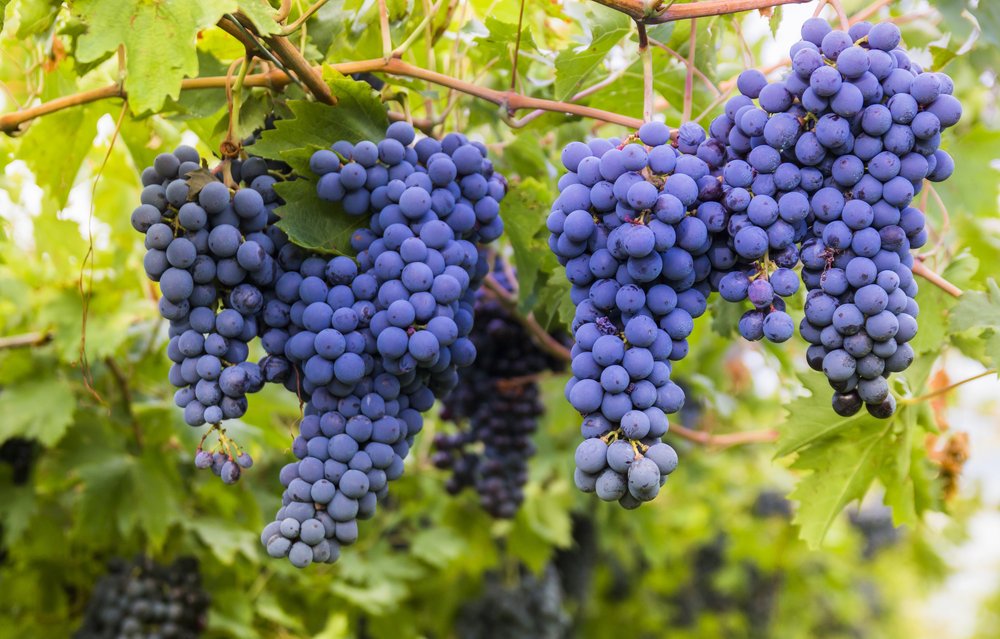
Photo by Photomario / Shutterstock.com
Disclosure: This post may contain affiliate links, meaning Beautiful Christian Life LLC may get a commission if you decide to make a purchase through its links, at no cost to you.
The Scriptures tell us that the Son of God began His sufferings in a Garden and brought them to a close in a Garden. That is an absolutely amazing display of God's wisdom. After all, Jesus is the second Adam undoing what Adam did and doing what Adam failed to do (Rom. 5:12-21; 1 Cor. 15:47-49). He is the Heavenly Bridegroom, entering into his sufferings in a garden for the redemption of his bride, the Church. He is the Heavenly Gardener, giving himself to the cultivation of the souls of his people through his atoning sacrifice and continual intercession.
When he hung on the cross, Jesus spoke of glory under the name of "Paradise"—an evident allusion to the paradise in which our first parents dwelt and the paradise from which they fell. He is the second Adam who, by the shedding of his blood, secured the new creation. As we consider the double entendres of the fourth Gospel, we come to those specifically concerning the biblical theology of the second Adam in the Garden. Consider the theological significance of the following two Garden settings in which Christ carried out the work of redemption.
1. Jesus began his sufferings in a Garden in order to show that he came to undo what Adam had done.
In his soul-stirring book, Looking Unto Jesus, Isaac Ambrose explained the theological significance of the Garden motif in the gospels—both with regard to the beginning of Christ's sufferings in the Garden of Gethsemane and at the end of his sufferings in the Garden where his body was laid to rest in the tomb. Concerning the first of these symbolic gardens, Ambrose suggested:
"Jesus went forth with his disciples over the brook Kidron, where there was a garden [John 18:1];" many mysteries are included in this word, and I believe it is not without reason that our Savior goes into a garden...Because a garden was the place wherein we fell, and therefore Christ made choice of a garden to begin there the greatest work of our redemption: in the first garden was the beginning of all evils; and in this garden was the beginning of our restitution from all evils; in the first garden, the first Adam was overthrown by Satan, and in this garden the second Adam overcame, and Satan himself was by him overcome; in the first garden sin was contracted; and we were indebted by our sins to God, and in this garden sin was paid for by that great and precious price of the blood of God: in the first garden man surfeited by eating the forbidden fruit, and in this garden Christ sweat it out wonderfully, even by a bloody sweat; in the first garden, death first made its entrance into the world; and in this garden life enters to restore us from death to life again; in the first garden Adam's liberty to sin brought himself and all of us into bondage; and, in this garden, Christ being bound and fettered, we are thereby freed and restored to liberty. I might thus descant in respect of every circumstance, but this is the sum, in a garden first began our sin, and in this garden first began the passion, that great work and merit of our redemption.[1]
Since "a garden was the place wherein we fell...therefore Christ made choice of a garden to begin there the greatest work of our redemption," Jesus is the second Adam. It is fitting, therefore, that his work of undoing all that Adam did should begin in a Garden. Charles Spurgeon drew out this same observation, stating:
May we not conceive that as in a garden Adam’s self-indulgence ruined us, so in another garden the agonies of the second Adam should restore us. Gethsemane supplies the medicine for the ills which followed upon the forbidden fruit of Eden. No flowers which bloomed upon the banks of the four-fold river were ever so precious to our race as the bitter herbs which grew hard by the black and sullen stream of Kedron.[2]
2. Jesus concluded his sufferings in a Garden to show that he accomplished all that Adam failed to accomplish.
It is not only in a Garden that Jesus began the work of redemption; it is in a Garden that Jesus finished the work of redemption. Our Lord Jesus was buried and raised in a Garden. When he came to expound the account of Mary Magdalene outside of the Garden-tomb, weeping and thinking that Christ was merely "the Gardener" on the day of His resurrection, Ambrose again noted:
As Adam in the state of grace and innocency, was placed in a garden, and the first office allotted to him, was to be a gardener; so Jesus Christ appeared first in a garden, and presents himself in a gardener's likeness: and as that first gardener was the parent of sin, the ruin of mankind, and the author of death; so is this gardener the ransom for our sin; the raiser of our ruins, and the restorer of our life. In some sense, then, and in a mystery, Christ was a gardener; but Mary's mistake was in supposing him the gardener of that only place; and not the gardener of our souls.[3]
Spurgeon further unpacked the idea that the Scriptures mean for us to view Jesus as the Gardener of the souls of his people when we see him appearing to Mary in the Garden where His body had been buried. In his sermon, "Supposing Him to be the Gardener," Spurgeon explained:
If we would be supported by a type, our Lord takes the name of "the Second Adam," and the first Adam was a gardener. Moses tells us that the Lord God placed the man in the garden of Eden to dress it and to keep it. Man in his best estate was not to live in this world in a paradise of indolent luxury, but in a garden of recompensed toil. Behold, the church is Christ's Eden, watered by the river of life, and so fertilized that all manner of fruits are brought forth unto God; and he, our second Adam, walks in this spiritual Eden to dress it and to keep it; and so by a type we see that we are right in "supposing him to be the gardener." Thus also Solomon thought of him when he described the royal Bridegroom as going down with his spouse to the garden when the flowers appeared on the earth and the fig tree had put forth her green figs; he went out with his beloved for the reservation of the gardens, saying, "Take us the foxes, the little foxes, that spoil the vines: for our vines have tender grapes." Neither nature, nor Scripture, nor type, nor song forbids us to think of our adorable Lord Jesus as one that careth for the flowers and fruits of his church.[4]
Adam was called to guard and keep the Garden. This certainly included his need to protect his bride from the temptations of the evil one. When Jesus entered into his sufferings on the cross, he did so with His bride—the church—with him there in the Garden. As Adam should have warned Eve to "watch and pray that you may not enter into temptation" (Matt. 26:41), so Jesus warns his bride—the Church—to do that very thing. There is a striking parallel between the events of the two Gardens—Eden and Gethsemane.
There are also striking parallels between the tree of the Knowledge of Good and Evil and the tree from which Jesus is to drink the fruit of the cup placed before him. In the garden of Eden, God told Adam that he could eat of every tree except one. In the garden of Gethsemane, God the Father essentially told Jesus to eat from one tree and one tree only. "The cup" symbolized the fruit of Adam's sin—the wrath of God. The wrath of God was the fruit that Jesus was to partake of as our Redeemer. When he presses through the soul struggles of Gethsemane and makes his way to the sufferings of Golgotha, Jesus is showing that he is the second Adam who came conquering and to conquer—Satan, sin and death. Now, all those who trust in him are given freely to eat of the Tree of Life.
Sinclair Ferguson sums this all up for us when he writes:
Adam was to "garden" the whole earth for the glory of His Father. But he failed. Created to make the dust fruitful, he himself became part of the dust. The Garden of Eden became the wilderness of this world. But do you also remember how John's Gospel records what happened on the morning of Jesus' resurrection? He was "the beginning [of the new creation], the firstborn from the dead." But Mary Magdalene did not recognize Him; instead, she spoke to him, "supposing him to be the gardener." Well, who else would he be, at that time in the morning?
The gardener? Yes, indeed. He is the Gardener. He is the second Man, the last Adam, who is now beginning to restore the Garden.
Later that day Jesus showed his disciples where the nails and the spear had drawn blood from his hands and side. The Serpent had indeed crushed his heel. But he had crushed the Serpent's head! Now he was planning to turn the wilderness back into a garden. Soon he would send his disciples into the world with the good news of his victory. All authority on earth—lost by Adam—was now regained. The world must now be reclaimed by Jesus the conqueror.
In the closing scenes of the book of Revelation, John saw the new earth coming down from heaven. What did it look like? A garden in which the tree of life stands![5]
Meditation on these truths ought to make our souls to sing. These truths should stir up within us greater love to the Christ who first loved us. They should make us long to go to the One who tends to and tills the soil of our souls. We are a garden to our God and Father, and Jesus in our heavenly Gardener who cultivates the sweet fruit of the gospel in us.
Related Articles:
-
12 Reasons Why Jesus Meant It When He Said, “It Is Finished"
-
“Woman, Why Are You Weeping?” The Redemptive and Personal Reality of the Resurrection
-
6 Reasons Why Adam and Eve’s Eating of the Forbidden Fruit Was a Terrible Transgression against God
-
Got Peace Right Now? 7 Things You Need to Know About Your Justification in Christ
Rev. Nick Batzig is the pastor of Church Creek Presbyterian Church (PCA) in Charleston, South Carolina, and an associate editor for Ligonier Ministries.
This article is adapted from "Jesus, the True and Greater Gardener" at Christward Collective, a conversation of the Alliance of Confessing Evangelicals.
Recommended Book:
Name above All Names by Alistair Begg and Sinclair B. Ferguson

[1] Isaac Ambrose, Looking Unto Jesus (Pittsburgh: Luke Loomis & Co., 1832),337-338.
[2] An excerpt from C.H. Spurgeon's sermon "The Agony in Gethsemane."
[3] Ambrose, Looking Unto Jesus, 442.
[4] An excerpt from C.H. Spurgeon's sermon "Supposing Him to be the Gardener."
[5] Alistair Begg and Sinclair Ferguson, Name Above All Names (Crossway, 2013), 34.
from BLOG - Beautiful Christian Life https://ift.tt/vOo6fq9
via IFTTT

No comments:
Post a Comment